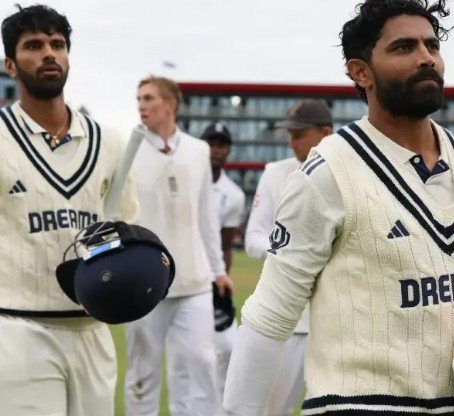By Arvind Sharma, Senior Columnist and Journalist
As India embarks on its high-stakes Test series in England, the spotlight shifts beyond the boundary ropes—squarely onto the Board of Control for Cricket in India (BCCI). More than just a battle on English soil, this tour has become a reflection of where Indian Test cricket stands today, and where it might be headed tomorrow.
India’s recent red-ball record tells a troubling story. A string of underwhelming performances—including defeats on home soil—has pushed the team down the World Test Championship standings. For a nation that once prided itself on its Test prowess, this is not just a slump; it’s a wake-up call. The pressing question now: Is the BCCI truly safeguarding the soul of Test cricket?
Test Cricket: The Format That Reveals All
Unlike the glitz and adrenaline of the IPL, Test cricket is an unforgiving format—demanding not just skill, but temperament, tenacity, and tactical intelligence. Here, patience often trumps power. A well-judged leave can be more impactful than a six. Test cricket doesn’t just reveal how well you play—it reveals who you are as a player.
It’s this format that builds legends. And it’s this format that now stands at a crossroads in Indian cricket.
Youthful Exuberance, But at What Cost?
India’s squad for the England tour features a relatively young and inexperienced side. While this signals a bold investment in the future, it has also exposed the dangers of rushing transition. Many of these young players, honed in the frenetic pace of T20 leagues, are struggling to adapt to the methodical demands of Test cricket.
Frequent batting collapses, erratic bowling spells, and a lack of session control have already marred the series. The ability to manage sessions—build pressure, rotate strike, bowl with discipline—is learned not just in nets but through experience on the field. Test cricket is as much about absorbing pressure as it is about applying it.
Time to Revisit the Veterans
It’s imperative that the BCCI reassess its current selection priorities. In a format where stability is paramount, seasoned campaigners cannot be cast aside lightly. Players like Cheteshwar Pujara, whose technique and temperament are tailor-made for grinding out tough spells, still have a vital role to play. Suryakumar Yadav, despite being known for white-ball prowess, has the compact game and mindset to succeed in red-ball cricket. Sanju Samson too, with refinement and grooming, can evolve into a dependable long-format player.
And then there’s Virat Kohli—arguably India’s most impactful Test cricketer of the last decade. While his recent batting form may have dipped, his leadership qualities, intensity, and cricketing brain are irreplaceable assets. Bringing him back—not just as a player but as a leader—could restore confidence and structure in this unsettled squad.
Don’t forget Ravindra Jadeja and KL Rahul—two experienced cricketers who offer both skill and composure. Their presence lends depth, balance, and reliability in crunch moments.
Building a Balanced Test Unit
The BCCI’s challenge now is to build a team that reflects the true nature of Test cricket: a blend of youth and maturity, flair and patience, aggression and calculation. Selection policies must be tailored to suit the unique rhythm of the format, rather than mirroring white-ball criteria.
Young players must be given opportunities, yes—but within a setup where they can learn from the wisdom of veterans. A successful Test team isn’t built overnight; it’s shaped carefully through foresight, faith, and familiarity with the longer form’s nuances.
A Crucial Juncture for Indian Cricket
This England tour may well become a turning point. The BCCI can either persist with a flawed experiment or undertake a serious course correction. What’s needed now is not panic, but perspective—a clear-eyed reassessment of how India approaches the most demanding format of the game.
India has no shortage of talent, history, or hunger. But if the country is to reclaim its Test supremacy, the administrators must commit to the unique discipline of the format. That means more first-class cricket, better red-ball coaching pathways, thoughtful workload management, and above all, respect for experience.
The roadmap to Test glory isn’t built on hype or headlines. It’s built on humility, hard work, and honest selection. If the BCCI listens closely, this could be the moment Indian cricket rediscovers its roots—and its red-ball magic.
Image is courtesy Internet





